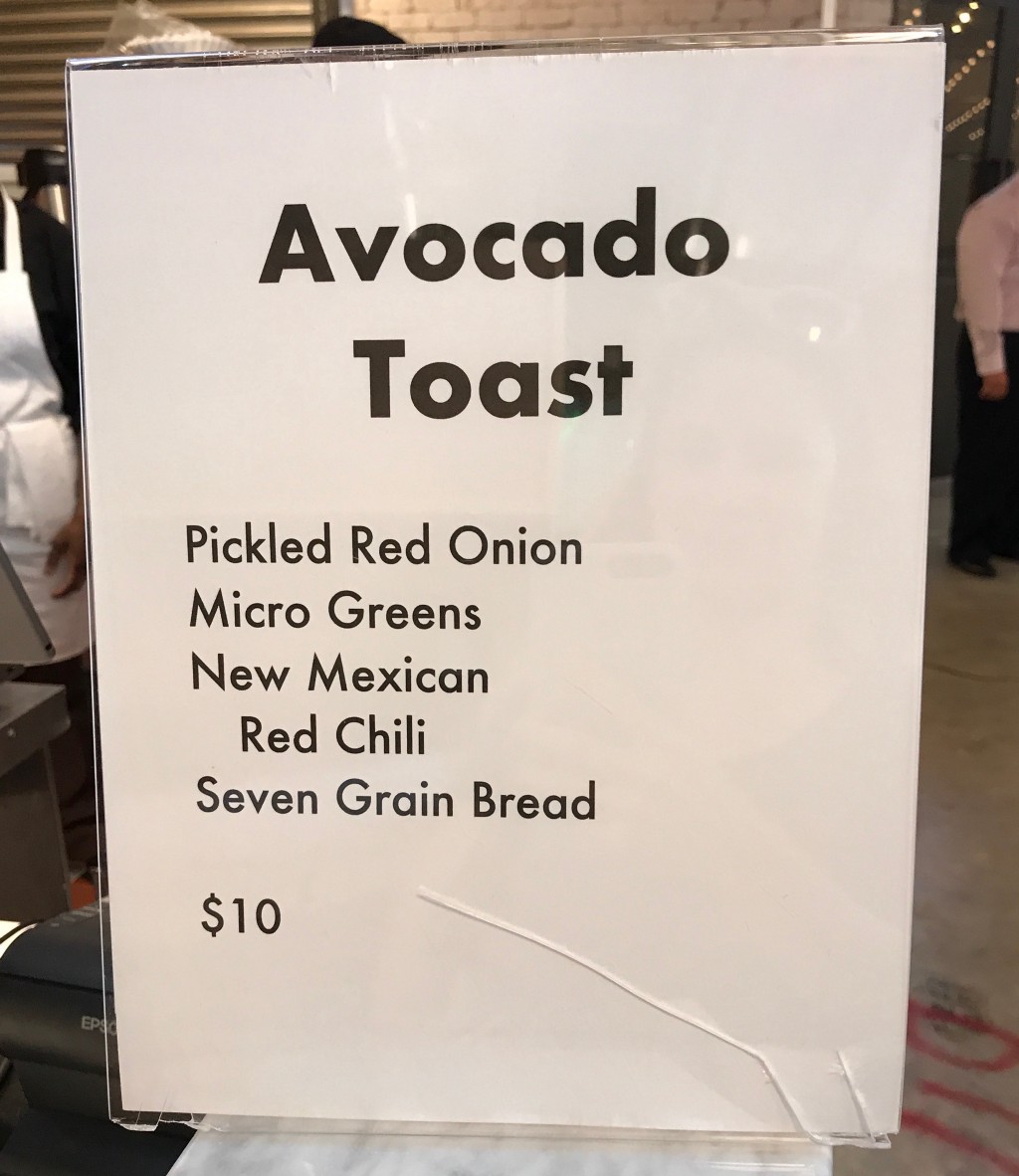Now I Am Become Mall, Destroyer Of Cities
(And now all the malls are food halls.)

Greenwich Village was once a world apart, where anything was possible. now it’s an upscale suburban shopping mall because the so-called Heartland is spreading like a cancer into the heart of this city, making it a less comfortable place for “weirdos” to exist.
this makes me angry and sad beyond words.
—Jeremiah Moss, Vanishing New York
I just went to lunch with my co-workers at the newly opened DeKalb Market Hall in the part of Downtown Brooklyn I affectionately like to refer to as “DumBro,” and collectively, we spent nearly a hundred dollars on pop-up food trends like poke bowls, pierogis, single-origin coffees, and South American maize patties.
As we were leaving, I spotted a sign for ten-dollar avocado toast. I kept re-reading the list of ingredients, wondering how the price tag made sense, even if an entire $2.50 Hass was used, and even if the worker who prepared it were being paid a living wage. There was no protein at all. What could justify the price? Were the micro greens grown hydroponically from the man-bun of a BernieBro? Was it the New Mexican Red Chile, i.e., a ripened green Hatch chile, which is itself mostly a marketing ploy to make New Mexico seem uber cool because it’s just a cultivar that was selectively bred for its “larger smoother, fleshier, more tapering and shoulderless pod for canning purposes”? Surely it wasn’t the pickles or the bread, which are ordinary things we are now all expected to make at home from scratch and then photograph in good light.
The food we ate was good, if vastly overpriced, but that is sort of what you’re in for with a New York “food hall” these days. From Berg’n to Brookfield Place to Eataly to Chelsea Market to Gotham West—they’re malls, but for food. Places you can walk around and spend money in bulk. Maybe it was something about being underground in a confusing maze of food stalls, maybe it was the classic rock being piped in over the sound system, but something about it was just sort of depressing. Maybe we were all in an overcast sort of mood, having just walked past a full-block construction site that was supposed to have been finished in March of this year, but didn’t even have the foundation dug yet.
We found a little corner to sit with our recyclable containers and green forks and the conversation turned, as it does, to malls, and how New York City has become a giant one (SoHo and Nolita in particular, have felt like outdoor malls for quite some time). Increasingly we see the newer malls and retail locations coupled with food stalls preparing poke bowls and cake pops. Think what Hudson Eats is to Brookfield Place: somebody’s gotta move product and it’s more likely to be the food court than the “clean, well-lighted spacecraft” of Saks Fifth Avenue.
Retail isn’t dying exactly, but it is suffering a fairly damaging and inevitable corporate fate that looks something like Island Gigantism. Amazon just bought Whole Foods, J. Crew is basically dead (though I would argue it’s been a zombie for a decade now), Walmart bought Bonobos and ModCloth, Diageo bought George Clooney’s tequila, and eventually we’ll all be owned by cable companies that have direct access to our banks and our internet footprint. According to Seeking Alpha, we’re in full “Retail Carnage”:
A multitude of threats deriving from e-commerce, shifts in consumer spending habits and an excess supply of malls have put increasing pressure on shares of retail focused businesses.
Simon Property Group: Retail Carnage Creates Opportunity
So what will save us? What is the future of malls?
“Dining and entertainment is the new anchor — not Sears, not Macy’s,” said Allan Davidov of Misuma Holdings, based in Beverly Hills, Calif., which is transforming two shopping centers in Austin, Tex.
At Grapevine Mills, a popular shopping destinations in North Texas, the “experiential” formula is a major part of the marketing strategy.
Deep in the Malls of Texas, a Vision of Shopping’s Future
That’s right, it’s the end of retail and the start of pure consumption, and the Simon Property Group is all over it. The mall of the future is an amusement park of a food hall, where we can easily and deliciously follow the quickest path to setting our money on fire—converting money into immediate kilocalories consumed on the spot. It’s no accident we call it “consumerism.” Food is fuel, yes—it always has been. But where is it taking us?
